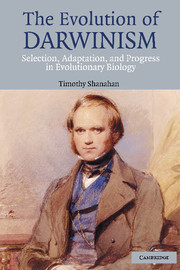2 - The Group Selection Controversy
Published online by Cambridge University Press: 18 December 2009
Summary
Understanding what kind of variation is possible and at what level selection occurs over those variations is what has driven the conversation about evolutionary biology at least since Darwin.
(Ahouse 1998, p. 370)Introduction
In order to explain certain puzzling biological phenomena that seemed to make little sense on the assumption that natural selection operates exclusively at the level of individual organisms, Darwin toyed with the idea of selection operating at the level of entire communities. The implications of this idea were profound. If selection operated at this more inclusive level, then the “beings for whose good natural selection works” might include groups as well as individual organisms. Selection operating at the group level could forge adaptations that benefit the group rather than each organism considered separately. Consequently, not every property of an individual organism need benefit that organism. Indeed, some organismic properties might even be detrimental to their immediate possessors, so long as they were sufficiently advantageous at the group level. Thanks to Darwin's invocation of community-level selection, for any biological phenomenon or characteristic requiring an evolutionary explanation, one could now ask whether it was selected and had thereafter evolved for individual or for group benefit.
Darwin's bold move of introducing the idea of selection for group benefit significantly expanded his theory's ability to explain puzzling biological phenomena. It also created a troubling tension within his theory.
- Type
- Chapter
- Information
- The Evolution of DarwinismSelection, Adaptation and Progress in Evolutionary Biology, pp. 37 - 62Publisher: Cambridge University PressPrint publication year: 2004



